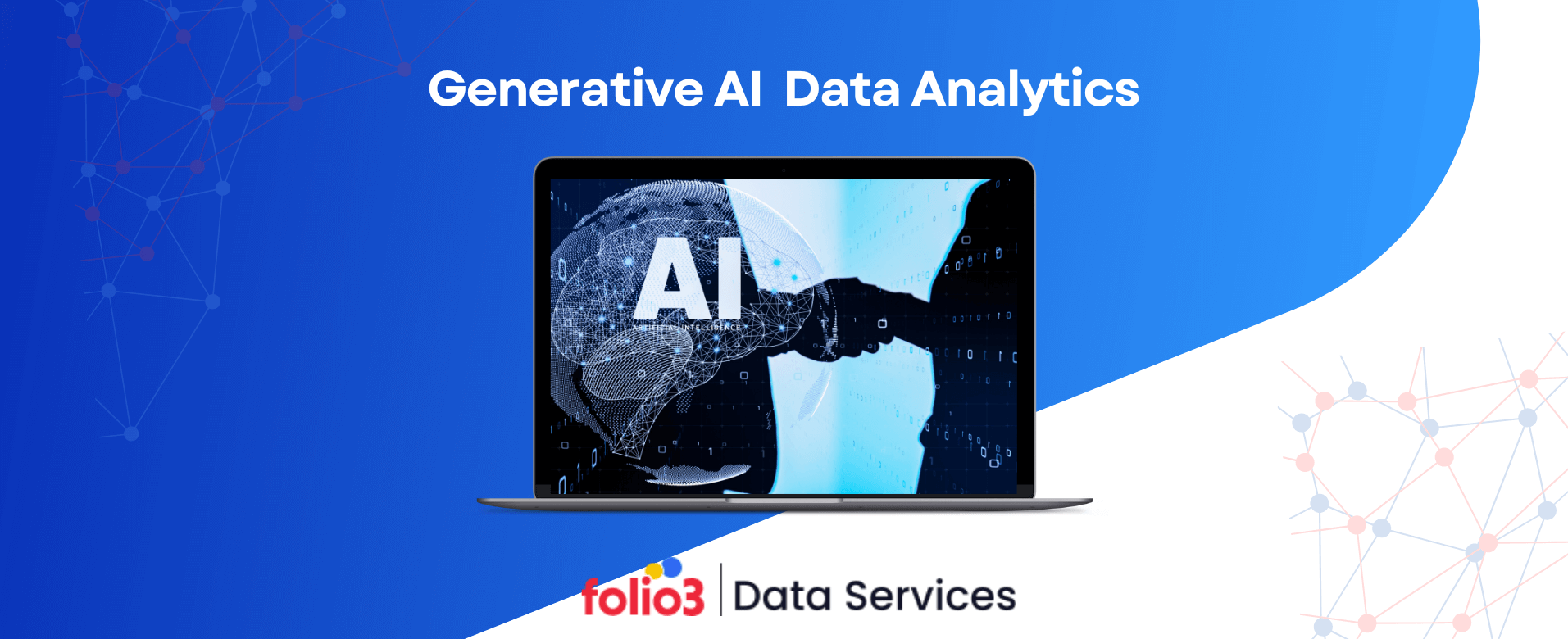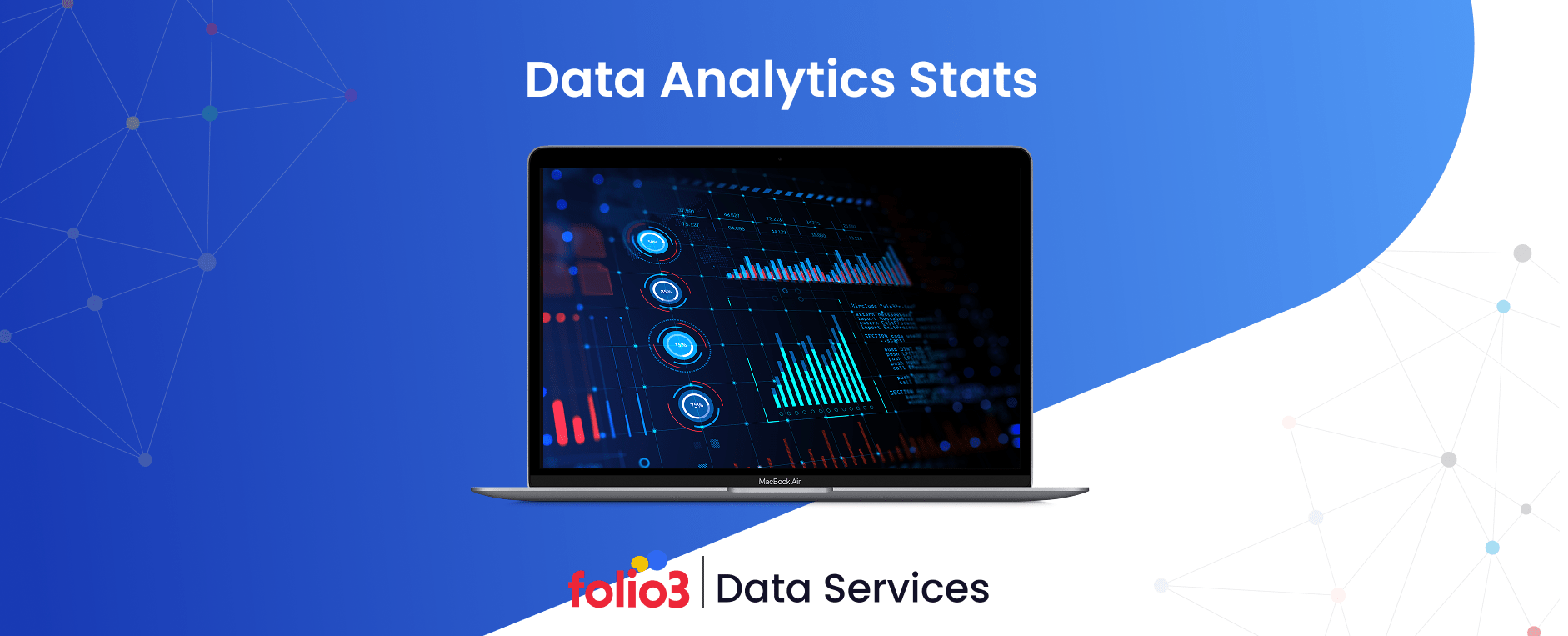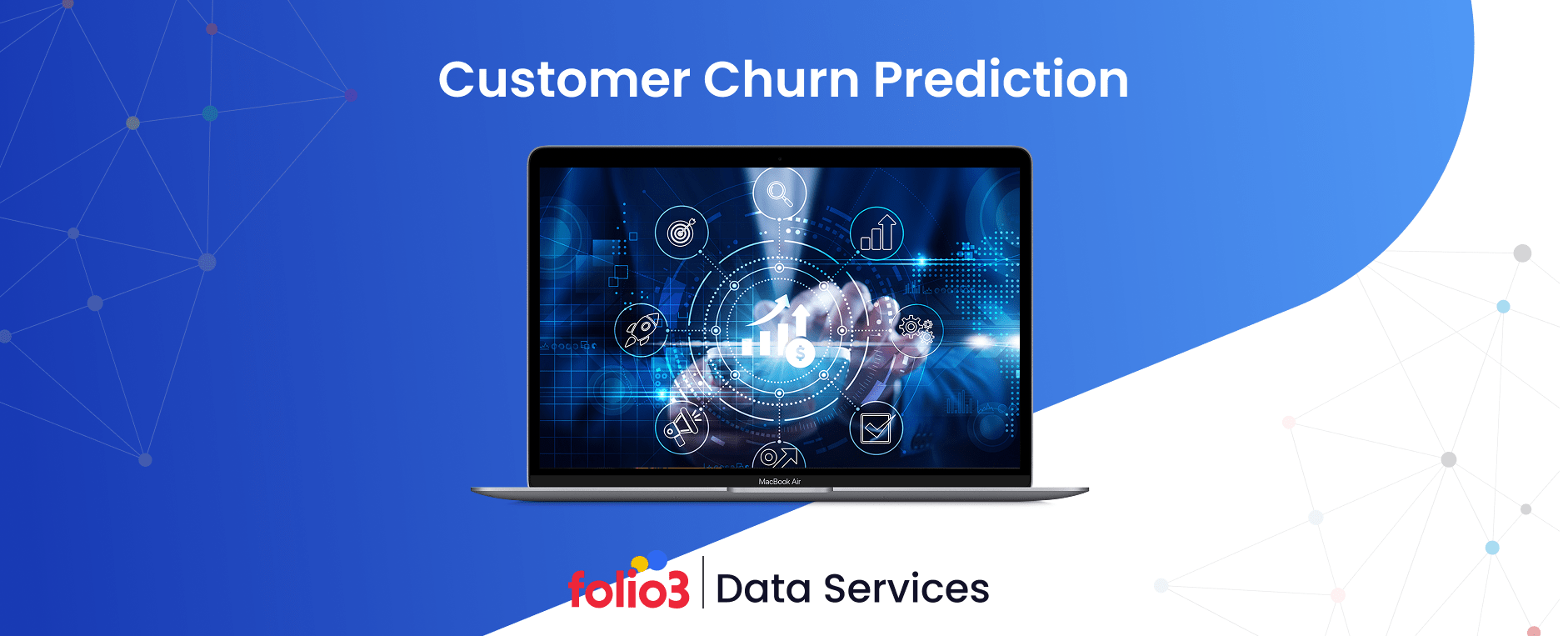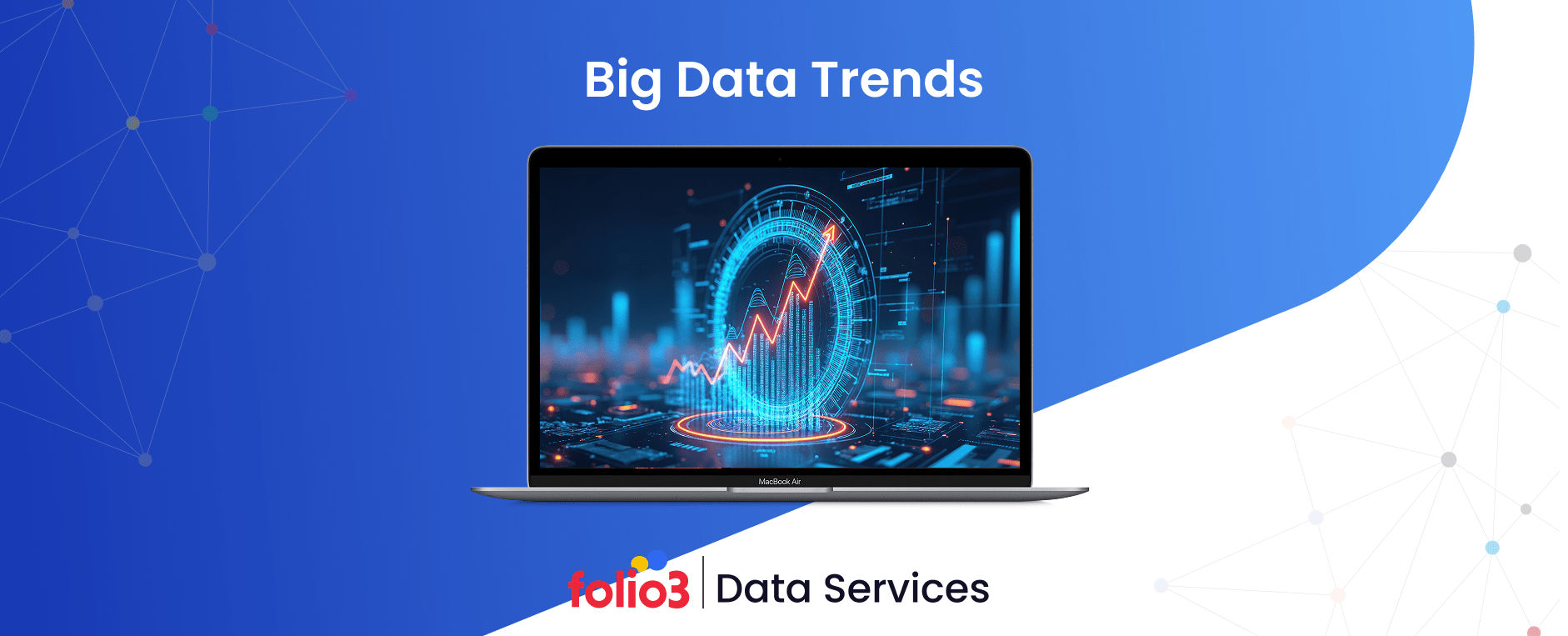Generative AI is revolutionizing the field of data analytics, bringing transformative capabilities to industries striving for deeper insights and operational efficiency. Unlike traditional AI, which analyzes existing data, generative AI for data analytics creates new data that complements and enriches existing datasets.
Its applications are vast and impactful, from synthesizing realistic data for model training to simulating future scenarios. Businesses across sectors increasingly use generative AI for data analytics to overcome data limitations, streamline analytics, and unlock innovative use cases.
Let’s explore the potential of generative AI for data analytics, its applications, and the steps to integrate it effectively into your analytics strategy.
What is Generative AI?
Generative AI is a subset of artificial intelligence techniques designed to create new data, content, or patterns. By utilizing models such as Generative Adversarial Networks (GANs) and Variational Autoencoders (VAEs), generative AI can mimic the characteristics of real-world data.
This capability extends to generating synthetic datasets, creating personalized insights, and even simulating potential outcomes. Generative AI for data analytics is a powerful tool for enhancing traditional methods, enabling more accurate predictions, and uncovering hidden insights.
The Role of Generative AI in Data Analytics
Generative AI data analytics is revolutionizing the field by introducing transformative capabilities that enhance how data is prepared, analyzed, and utilized.
This approach leverages advanced algorithms to create new data, simulate scenarios, and uncover more profound insights, driving smarter and more innovative decision-making processes.
Its ability to automate complex processes and deliver high-quality results makes it an invaluable tool for modern businesses.
Data Preparation and Cleaning with Generative AI
One of the most significant challenges in data analytics is ensuring that datasets are accurate, consistent, and anomaly-free. Errors or gaps in data can skew results, leading to inaccurate insights and flawed decision-making. This is where generative AI for data analytics proves indispensable.
Generative AI automates the traditionally time-consuming task of data preparation and cleaning. Using sophisticated machine learning models, it identifies inconsistencies in datasets, predicts missing values, and generates accurate replacements. This process saves time and enhances data quality, ensuring that analytics teams can focus on deriving actionable insights rather than correcting errors.
When paired with expert data engineering services, generative AI can be even more effective—ensuring data pipelines are robust, scalable, and optimized for high-quality analytics.
For example, clean and reliable data is critical in data analytics use cases such as customer behavior analysis or predictive modeling. Generative AI ensures businesses have a strong foundation for accurate and meaningful data-driven decisions.
Synthetic Dataset Creation for Enhanced Analytics
Data scarcity or privacy concerns can limit access to sufficient training data for analytics models in many industries. Generative AI bridges this gap by creating synthetic datasets—artificial data that mimics real-world data’s statistical properties and complexities without exposing sensitive information.
This capability is particularly beneficial in data science and AI use cases where high-quality data is essential. For instance:
- In healthcare, generative AI can produce anonymized patient data for research while maintaining privacy compliance.
- In finance, synthetic transaction data can train fraud detection models without revealing customer details.
Scenario Simulation and Predictive Analytics
Another critical role of generative AI for data analysis lies in its ability to simulate complex scenarios and provide predictive insights. Traditional predictive analytics often rely on historical data, which may not account for unprecedented or rapidly changing conditions. Generative AI, on the other hand, can simulate a wide range of potential future scenarios by considering various variables and conditions.
This is particularly valuable for data analytics use cases like demand forecasting, risk assessment, and strategic planning. Businesses can use these simulations to:
- Forecast Market Trends: Generative AI models generate future market scenarios, helping organizations prepare for potential shifts and make proactive decisions.
- Optimize Supply Chains: By simulating supply chain disruptions, generative AI allows businesses to identify vulnerabilities and develop contingency plans.
- Enhance Financial Risk Management: Generative AI creates hypothetical economic conditions, enabling financial institutions to stress-test their portfolios and mitigate risks effectively.
Applications of Generative AI in Data Analytics
Generative AI has diverse applications that elevate the effectiveness of analytics.”
Data Augmentation
Generative AI addresses data scarcity by filling gaps in datasets by creating synthetic data that mirrors the statistical properties of the original data. This ensures analytics models have richer, more diverse inputs, enhancing accuracy and performance.
In environments where real-world data is limited or sensitive, such as healthcare or finance, generative AI data analytics provides an effective solution for robust model training and testing.
Scenario Simulations
Generative models play a crucial role in simulating potential scenarios, enabling organizations to plan effectively for uncertain conditions. Businesses can forecast outcomes related to market trends, supply chain disruptions, or operational risks. By leveraging generative AI for data analysis, organizations gain deeper insights into possible futures, empowering them to optimize strategies and make proactive decisions.
Pattern Recognition and Insights
The vast capabilities of generative AI allow it to analyze enormous datasets to uncover hidden patterns and trends that traditional analytical methods may miss. This helps organizations derive actionable insights, boosting their ability to respond to consumer behavior or market dynamics changes.
Integrating an AI-driven enterprise search solution further enhances this process by enabling teams to quickly locate relevant datasets, insights, and reports across the organization, ensuring that data discovery and analysis happen efficiently. Generative AI data analytics enhances precision and depth, ensuring businesses stay ahead of their competition with data-driven innovation.
Personalization
Personalization is a key advantage of data science and AI use cases, and generative AI excels in crafting user-specific insights. Whether tailoring customer recommendations or providing decision-makers with customized analytics, this application improves engagement and operational efficiency. Personalized insights enable businesses to connect more effectively with their audiences, driving better industry outcomes.
Automated Reporting
Narrative analytics, powered by generative AI, revolutionizes reporting by translating complex datasets into clear, understandable narratives. Automating the reporting process saves time and makes data accessible to a broader audience. Stakeholders can quickly grasp key trends and insights, enhancing decision-making and operational alignment. Generative AI for data analytics ensures that reports are both efficient and impactful.
Use Cases of Generative AI in Data Analytics
Generative AI revolutionizes how businesses harness data, offering innovative solutions to complex analytical challenges. Its ability to simulate scenarios, generate synthetic data, and uncover hidden patterns unlocks new industry opportunities.
From fraud detection to personalized insights, these data analytics use cases showcase the transformative potential of generative AI for data analysis in driving more innovative, faster, and more precise decision-making.
Customer Behavior Modeling and Forecasting
Generative AI creates synthetic customer profiles and simulates scenarios to predict purchasing behaviors. Businesses use these insights to refine marketing strategies, personalize customer interactions, and enhance loyalty programs.
Anomaly Detection in Fraud Prevention
Generative AI improves fraud detection systems by simulating fraudulent patterns. Financial institutions leverage this to identify and prevent suspicious activities proactively.
Optimizing Supply Chain Operations
Generative models predict supply chain disruptions and forecast demand, enabling better inventory management, logistics planning, and risk mitigation.
Key Benefits of Generative AI in Data Analytics
Adopting generative AI for data analytics transforms how businesses handle, interpret, and act on data. This cutting-edge technology addresses common challenges in analytics while offering innovative solutions to improve data quality, accelerate processes, and reduce costs.
Organizations can unlock significant value, optimize resources, and achieve deeper insights by integrating generative AI data analytics into workflows. Let’s explore some of the key benefits it provides.
Improved Data Quality and Diversity Through Synthetic Data Generation
One of the most significant advantages of generative AI for data analysis is its ability to generate synthetic datasets that mirror real-world conditions. Synthetic data creation addresses gaps in datasets and ensures diversity and representation, which are crucial for training accurate and unbiased models.
This capability is particularly beneficial in data analytics use cases where data is scarce, sensitive, or difficult to acquire, such as in the healthcare or financial industries. By leveraging data science and AI use cases, businesses can train their models on realistic datasets, thereby enhancing the reliability and effectiveness of their predictive algorithms.
Acceleration of Data-Driven Decision-Making Processes
The speed and accuracy of generative AI data analytics make it a game-changer in decision-making. Generative models simulate scenarios, predict outcomes, and identify trends faster than traditional analytics. This rapid generation of actionable insights empowers businesses to respond to market shifts, optimize operations, and capitalize on opportunities with greater agility.
For instance, organizations can forecast supply chain demands or detect changes in customer preferences with real-time precision, enabling them to make informed decisions swiftly.
Enhanced Anomaly Detection and Root-Cause Analysis
Anomaly detection is a critical task across industries in data science and AI use cases. Generative AI recognizes patterns and simulates potential anomalies, making it highly effective in fraud prevention, cybersecurity, and quality control.
By analyzing deviations from expected data patterns, generative AI helps detect anomalies earlier and identify their root causes. This capability mitigates risks and allows for proactive measures, ensuring operational stability and security.
Cost-Effectiveness in Scenarios With Limited or Sensitive Data
Generating synthetic data with generative AI for data analytics reduces the dependence on expensive real-world data collection, especially in scenarios where data is confidential or scarce.
For example, in data analytics use cases involving privacy-sensitive environments such as healthcare or finance, synthetic datasets enable compliance with regulations while minimizing data acquisition costs.
Generative AI Tools and Platforms for Data Analytics
The rise of generative AI for data analytics has brought forth a range of powerful tools and platforms that support its implementation across various industries. These tools help businesses harness the full potential of generative AI data analytics, enabling them to enhance model performance, automate data preparation, and unlock new insights from vast datasets.
TensorFlow and PyTorch
One of the most popular frameworks for building generative models is TensorFlow, developed by Google and PyTorch, which is widely favored in the research community. These frameworks provide a robust foundation for building models like Generative Adversarial Networks (GANs) and Variational Autoencoders (VAEs), commonly used for generating synthetic data, enhancing pattern recognition, and improving data augmentation. TensorFlow and PyTorch are critical for businesses seeking to implement generative AI for data analysis within their data pipelines.
Databricks
In addition to these frameworks, platforms like Databricks offer unified environments that integrate data engineering and machine learning workflows, making managing and scaling generative AI projects easier. With its collaborative features, Databricks allows data scientists and analysts to work together seamlessly, ensuring that the generative AI models can be fine-tuned for various data analytics use cases, including predictive analytics, scenario simulation, AI data extraction, and anomaly detection.
OpenAI and Hugging Face APIs
OpenAI and Hugging Face provide ready-to-use APIs optimized for text generation, data augmentation, and analytics integration for businesses looking for easy-to-implement generative AI solutions. These APIs reduce the complexity of building generative models from scratch, enabling even smaller organizations to integrate generative AI capabilities into their data workflows.
How to Implement Generative AI for Data Analytics?
Implementing generative AI for data analytics requires a strategic approach, ensuring alignment with business goals and operational workflows. The process involves assessing your organization’s needs, identifying suitable use cases, and leveraging the right technologies to maximize impact.
Below is a detailed guide to successfully integrating generative AI data analytics into your operations:
Step 1 – Assessing Organizational Needs and Objectives
Begin by evaluating your organization’s current analytics capabilities and identifying areas where generative AI for data analysis can add value. Define clear objectives, such as improving data quality, enhancing predictive analytics, or automating reporting processes.
By understanding your unique requirements, you can tailor the implementation to address specific challenges and opportunities. Partnering with data strategy consulting experts ensures the integration aligns with your broader business strategy and delivers measurable results.
Step 2 – Identifying Use Cases Suitable for Generative AI
The next step is pinpointing the data analytics use cases where generative AI can have the greatest impact. Common use cases include synthetic data generation, scenario simulation, and anomaly detection.
For instance, a retail business might use generative AI to model customer behavior, while a healthcare organization could generate synthetic patient data for research. Organizations with healthcare analytics expertise can better identify which use cases will deliver meaningful insights and comply with privacy regulations. Prioritizing high-impact applications ensures that your investment in generative AI yields tangible benefits.
Step 3 – Choosing the Right Tools and Technologies
Selecting the appropriate tools and platforms is crucial for the success of your generative AI initiative. Popular frameworks like TensorFlow and PyTorch support the creation of advanced generative models, such as GANs and VAEs. Cloud-based platforms like Databricks facilitate collaboration by integrating big data and analytics solutions with data engineering and machine learning workflows.
For quick deployment, OpenAI and Hugging Face APIs offer ready-to-use solutions for tasks like text generation and data augmentation. These technologies provide a robust foundation for implementing generative AI data analytics efficiently.
Step 4 – Building and Training Generative Models
Once you’ve identified the use cases and selected the tools, the focus shifts to building and training your generative models. This involves designing models tailored to your needs, such as creating synthetic datasets or simulating scenarios.
Training the models on relevant datasets is essential to ensure accuracy and reliability. During this phase, continuous testing and validation are necessary to refine and enhance the models’ performance.
Step 5 – Integrating Models Into Analytics Workflows
Integrating generative AI models into existing analytics workflows is critical to ensure seamless adoption. Whether it’s augmenting data pipelines or automating report generation, the models should be embedded into processes where they can deliver the most value.
Collaboration between data scientists and business analysts is vital to align the models’ outputs with actionable insights. This step ensures that generative AI for data analysis becomes an integral part of your decision-making framework.
Step 6 – Monitoring and Iterating for Continuous Improvement
The final step is to establish a system for monitoring the performance of generative AI models and iterating on their design. Regular evaluation of key metrics, such as accuracy and scalability, helps identify areas for improvement.
Incorporating stakeholder feedback ensures that the models continue to meet evolving business needs. Continuous iteration enhances the long-term effectiveness of your data science and AI use cases, keeping your organization ahead of the curve.
FAQs
How to Use Generative AI in Data Analytics
Integrate generative AI with machine learning, natural language processing, and predictive modeling to automate insights, enhance data storytelling, and uncover hidden patterns for smarter, faster business decisions.
What are the key use cases of generative AI in data analytics?
Generative AI enhances data analytics by powering automated reports, creating realistic synthetic data, spotting anomalies, forecasting trends, and delivering real-time insights—helping businesses improve accuracy, scale operations, and make smarter decisions.
How does data influence generative AI, and which data types work best for it?
Data shapes generative AI by training models to recognize patterns and produce relevant outputs. High-quality, diverse data—such as text, images, audio, and structured records—works best to create accurate, context-aware, and scalable results.
How should data be prepared for effective generative AI implementation?
For effective generative AI implementation, data should be thoroughly cleaned, well-labeled, and normalized. Ensuring balanced, high-quality datasets with relevant metadata and clear structure improves model training, boosts accuracy, and reduces bias.
Which strategy has the greatest impact on the data quality in generative AI models?
Implementing rigorous data governance—covering cleaning, validation, and continuous monitoring—has the greatest impact, ensuring accuracy, consistency, and reliability for high-performing generative AI models.
How do generative AI and data science work together?
Generative AI complements data science by automating pattern discovery, creating synthetic datasets, and generating insights, while data science provides the statistical methods and modeling frameworks that guide and validate AI outputs.
Conclusion
Generative AI is not just a futuristic concept but a transformative technology redefining how organizations approach data analytics. Its capabilities offer unparalleled opportunities for businesses to unlock deeper insights and drive innovation, from synthetic data generation and scenario simulation to personalized insights and anomaly detection.
At Folio3 Data, we specialize in helping businesses harness the power of cutting-edge technologies like generative AI. Our end-to-end solutions are tailored to your unique requirements, ensuring seamless integration of advanced AI models into your analytics workflows.



